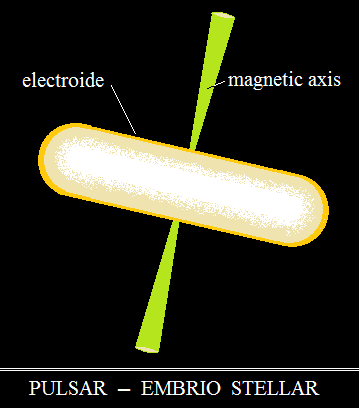The
life of stars dilates the universe
Star formation in the present concept.
The energy released by the sun suggests the idea of consumption,
of burning, implicitly how stars are formed.
The Star Study Laboratory is the planet earth, where the nuclear reaction
was discovered.
Therefore, nuclear reactions would explain the star-powered energy.
So the star is a giant cloud of hydrogen, a fuel that will be gravitationally
compressed
to create the conditions of nuclear reactions.
But gravity at this stage does not exist, the hydrogen cloud has expansion
properties.
The new star turns hydrogen into energy, hydrogen is consumed,
the star becomes small and is extinguished.
In the "terrestrial laboratory" the phenomena exactly opposite.
The development of vegetal and animal organisms shows composition,
accumulation, increase in size and complexity.
There follows reproduction (the law of nature), then death, decomposition.
In accordance with the natural organization of the material structures
and the stars must develop from simple to complex and not vice versa.There
must be a simple structure, an embryo to become a star.
Vectorial interpretation
Suppose the embryo is a pulsar.
The pulsar has a simple structure, composed of electroide and magnetic
axis,
not covered by the substance - is a stellar electromagnet.
The substances jets emitted from the magnetic axis are the interactions
of the rotation motion
of the magnetic axis with the surrounding substance, a kind of radar that
electromagnetically scans the substance (polar aura). The stellar electromagnet
animates all star activity, generates the electromagnetic spectrum oscillations,
generates vector oscillators (hydrogen, matter).
The star does not consume energy, the star produces energy!
It is the logic of existence (Lavoisier or existence?)
Thus, the electromagnet, the star, increases in volume and mass,
accumulating hydrogen until it becomes a supernova.
Supernova explosion can be considered the moment of reproduction.
Perhaps the electroide has reached a limit, when it releases the surplus
substance as "stellar embryos".
Embryos generate dazzling light and the arms of a small galaxy.
The electroide, the "core of the star", he continue his activity,
the development like phoenix bird, feeding itself with its own ashes.

